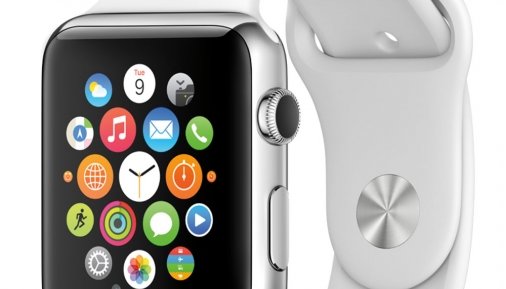The Apple Watch is set to hit the market on March 9, ushering in another must-have revolution that’s synonymous with the brand’s identity. The power of the Apple Watch to “change everything” includes empowering the health conscious to track their activity and performance in a more aggregated manner.
There are many eyes on this: tech gurus, healthcare companies, wearable-device makers and consumers. The paramount question on all our minds (with hope in some and fear in others) is: Will this be another iPod or iPhone?
The wearable-device landscape is different from any that Apple has entered into before. Apple is pushing its way into an already active – and crowded – marketplace. Smart watches are an active frontier of innovation with new entrants joining at a prodigious rate. Huawei and LG have recently unveiled watches that can also track your heart rate and your movements. But they do have their limits: neither manufacturer has announced a more robust interface to aggregate or track one’s other health data as Apple has.
Adding more fuel to the fire, the Apple Watch and iHealth platforms are open to developers – which is likely to result in a large number of health and fitness add-ons, from linking with a physical heart monitor to aggregating all your health information from a variety of apps into one interface. The promise is enormous to consumers and potentially highly disruptive to many businesses.
The explosion in health tracking devices changes the business landscape for many companies: GPS wearables like Garmin; threatened. Stalwart fitness wearables like Polar; threatened. Newer wearable entrants like FitBit and JawBone; threatened. All of the watchmakers themselves, threatened.
While the Apple Watch will grab headlines, the bigger story is the $4 billion (and growing) invested in start-up consumer health engagement technologies (CHET) in 2014. These smart technologies allow you to track, measure, time and diagnose, making them the new portable health guru. What will follow will be an avalanche of innovations and applications for consumers (and professionals) to track and guide their health decisions.
Often, CHET are featured on tech-oriented blogs, such as PSFK, and it’s hard to tell the hype from the heroes. While only a few thousand people are now using and prepaying for CHET items from start-ups, it is not too far a stretch of the imagination to consider a day when CHET will be a significant factor across the weight loss and fitness industry, and a growing enabler of adherence. Thanks to the connection of multiple sources, tracked health data can yield new insights into conditions that often have only been the domain of health professionals. Dr. Eric Topol’s book The Patient Will See You Now explores this territory. Unfortunately, it may not go far enough given the pace of innovation with CHET.
There is nothing sci-fi about the Apple Watch – we're talking about an individual's endless journey to maintain his or her, and their family’s, health. Apple, as it does, is further opening the door for a new wave of even greater opportunity for consumers and companies, and their mutual interest in consumers taking charge of their health.
But, above all, the success of the Apple Watch is predicated on its acceptance by consumers. That begs a few fundamental questions:
- While early-adopter consumers will definitely buy smart watches across all companies, how long will they use them, and will smart watches, more than the current fitness technologies and wearables, lead them to better health?
- Will smart watches become a mass market like smartphones? And if so, when?
We’ll be watching the consumer and exploring those questions in the months to come.




Post A Comment:
0 comments: